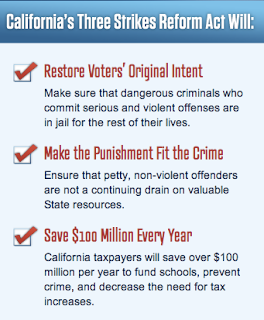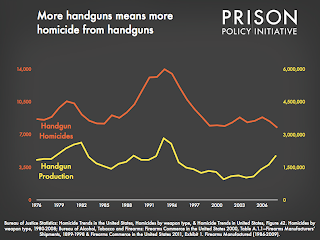I love the “freeways” analogy in today’s excellent op-ed from former assemblymember Jackie Goldberg!
Viewpoints: Fear mongers were wrong about prison system’s ‘realignment’
Special to The Bee
Published Tuesday, May. 29, 2012
A year into Gov. Jerry Brown’s plan to realign public safety, the Department of Corrections and Rehabilitation has produced a vision of “The Future of California Corrections,” whose plans, not surprisingly, are mirrored in the recent May revise budget. The plan is an attempt to overhaul and redirect a prison system that has been floundering for at least a decade, but it doesn’t go far enough.
A year ago we heard fear-mongering voices warning of dangerous criminals being released and counties too broke to provide jail space, parole officers or programming for realigned prisoners.
One year in, how’s realignment actually working out? The number of people held in state prison has dropped by more than 25,000 in 16 months since Brown has been in office. The count of people on parole is down almost 30,000, and the number of people held in private out-of-state prisons is down 10 percent; all that without a spike in crime.
The crime rate continues to fall and putting fewer people in state prisons means saving tax dollars, and given the $15.7 billion gap forecast in the May revise those savings have never been needed more than they are now. CDCR estimates that it is saving $1.5 billion a year through realignment and will save another $2.2 billion a year by canceling $4.1 billion in new construction projects.
As we see budgets slashed for In-Home Supportive Services, poor families being pushed out of child care and off Medi-Cal, and fewer high school graduates being able to afford to attend our public higher education system, we know where the money is needed.
Based on an encouraging first year, can we expect further parole and sentencing reforms resulting in even more reductions in corrections spending in the next few years? Unfortunately, some are making other plans.
Realignment is an idea that was floating around the Capitol when I arrived in 2000. The U.S. Supreme Court order to reduce deadly overcrowding in our prisons provided political cover for the meek and a political opportunity for the bold to turn around a bloated corrections system. So why is CDCR proposing to raise the population cap to 145 percent of capacity and build $810 million worth of new prison beds?
In my years in Sacramento, I saw that CDCR had developed a culture of construction. Got a problem? Build a new prison. As a Los Angeles native, I understood the culture of construction, familiar from decades of freeway building in Southern California. “Freeways crowded? Build more” was common sense for too long. Now we understand that new freeways will get crowded soon and that we need to invest in a culture and infrastructure of affordable public transit, and in housing people close to where they work.
Building more freeways wasn’t the answer; it was the problem. We’re just beginning to understand that about prisons and jails. Building all those prisons also meant borrowing billions – a big part of the wall of debt that Brown is trying to chip away at by cutting from health and human services, and education.
Fear of further expanding that debt has led the nonpartisan Legislative Analyst’s Office to recommend the Legislature consider closing prisons and act on alternatives to CDCR’s plan to build more.
As the Legislature examines CDCR’s “Future of California Corrections” and the governor’s May revise budget, the question is whether the Legislature takes steps to complete the turn away from 30 years of disastrous corrections policies or blindly shifts overcrowding and jail expansion to our 58 counties. If the proposed $500 million for new or bigger jails makes it through the budget process, we’ll know which direction our elected officials have chosen.
Corrections built prisons, but it was the Legislature that filled them with hundreds of laws that created new crimes and lengthened sentences. Serious sentencing and parole reforms are long overdue and communities, advocates, and other experts throughout the state have been providing ideas of where to start for decades.
An easy step could be to address the rapidly aging population by implementing a geriatric parole process, and expanding medical parole and compassionate release. Other options include passing legislation to decriminalize drug possession, or supporting the initiative to reform the “three strikes” law on the November ballot. We need only the political will to move away from sentencing and parole policies that have done more to bankrupt our state treasury than to secure safety in our neighborhoods.
Do we return to the course of expanding prisons and jails and expanding the percentage of our resources that go to filling them? Or do we take realignment as only a first step toward further downsizing, offering us the opportunity to use tax funds to invest in the well being of our residents now and in the future? I advocate for the latter.
Jackie Goldberg, a former Assembly member from Los Angeles, served on the Public Safety Committee.
http://www.sacbee.com/2012/05/29/v-print/4521707/fear-mongers-were-wrong-about.html







